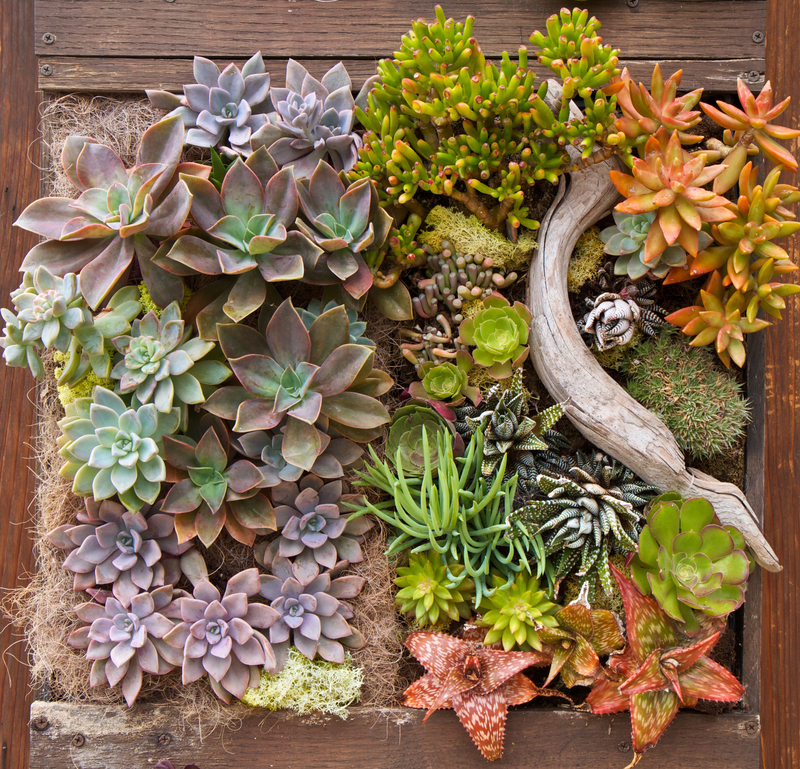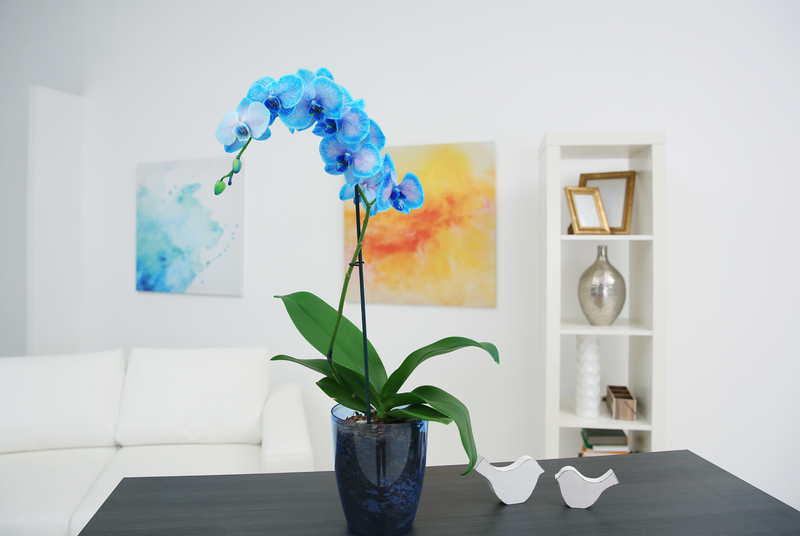The Art and Science of Container Gardening
Posted on 31/08/2025
The Art and Science of Container Gardening
Container gardening is more than just a passing trend--it's a transformative approach to growing plants, offering opportunities for creativity, experimentation, and year-round horticultural success. Whether you have a sprawling backyard, cozy balcony, or a sunny windowsill, the principles of this gardening style unlock the potential to cultivate lush, beautiful, and productive green spaces anywhere.

Understanding Container Gardening: A Blend of Art and Science
At its core, container gardening is the deliberate cultivation of plants within containers rather than in the open ground. This method brings together artistic expression and scientific knowledge, making it ideal for both beginners and experienced gardeners.
- Artistry: The artistic side encompasses creativity in color combinations, arrangement, and design.
- Science: The scientific aspect involves understanding plant biology, soil composition, and environmental factors for optimal growth.
Why Choose Container Gardening?
There are several compelling reasons to embrace container gardening techniques:
- Space Efficiency: Ideal for urban dwellers with limited yard space or renters with balconies.
- Mobility: Plants in containers can be relocated for better light, protection from harsh weather, or simply to refresh a landscape.
- Pest and Disease Management: Isolated containers limit the spread of soil-borne pests and diseases.
- Accessibility: Easier for gardeners with limited mobility to manage elevated containers.
- Design Flexibility: Allows for the creative mixing and matching of plants, textures, and colors.
Essential Elements of Successful Container Gardening
Selecting the Perfect Container
The choice of container is both an *artistic* and *practical* decision. The right pot enhances aesthetics while providing adequate space for root development.
Common Container Materials:- Terracotta: Porous, classic-looking, but dries out quickly.
- Plastic: Lightweight, retains moisture, often more affordable.
- Ceramic: Glazed options retain moisture; available in various colors and designs.
- Wood: Rustic appeal but susceptible to rot unless treated.
- Metal: Trendy but can heat up and damage roots in sunny locations.
- Size: Ensure sufficient space for roots to grow and mature.
- Drainage: Always select pots with drainage holes to avoid root rot.
- Weight: Consider ease of moving the container, especially when fully planted and watered.
The Science of Soil in Container Gardening
Unlike traditional gardening, soil for container gardening must provide nutrients, retain moisture, and allow drainage--all within a confined space. Soil science is pivotal.
- Avoid using regular garden soil which can become compacted and lacks proper drainage.
- Invest in a high-quality potting mix specifically formulated for container gardens--often containing peat, perlite, vermiculite, and compost.
- Consider special blends for succulents (more sand, better drainage) or acid-loving plants (amended with pine bark).
Choosing Plants for Your Container Garden
One of the joys of container gardening is the diversity of plants available for cultivation. From vibrant flowering annuals to compact vegetables and aromatic herbs, your choices are boundless.
Popular Choices:- Herbs: Basil, thyme, mint, parsley, chives, and rosemary.
- Vegetables: Lettuce, tomatoes, peppers, radishes, and dwarf beans.
- Flowers: Petunias, marigolds, pansies, begonias, impatiens, and geraniums.
- Perennials & Shrubs: Hostas, ferns, dwarf evergreens, lavender.
- Indoor Houseplants: Snake plant, philodendron, African violets, peace lily.
Key Consideration: Match plant selection to the available light--sun-lovers on southern exposures, shade-tolerant species for north-facing spots.
The Art of Designing Beautiful Container Gardens
While the science ensures plant health, the art of container gardening lies in your creativity. Your containers become a canvas to express color, form, and seasonal interest.
Principles of Design in Container Gardening
Garden designers often utilize the "thriller, filler, spiller" approach:
- Thriller: A tall, dramatic plant for the center or back (e.g., canna, cordyline, ornamental grasses).
- Filler: Bushy, mid-height plants that surround the thriller (e.g., coleus, calibrachoa, geraniums).
- Spiller: Trailing plants that cascade down the sides (e.g., sweet potato vine, ivy, lobelia).
- Mix leaf textures (bold, spiky, feathery, glossy) for depth and interest.
- Color theory: Combine complementary hues for vibrancy or analogous tones for harmony.
- Cluster pots of varying heights for a dynamic display.
Combining Form and Function
Functional container gardens are growing in popularity--think edible landscapes, pollinator-attracting arrangements, or air-purifying houseplants combined for both beauty and utility.
- Mix herbs with edible flowers (nasturtium, calendula) for attractive, tasty displays.
- Include dwarf fruit trees (lemon, fig, blueberry) for a patio harvest.
- Insert pollinator-friendly plants like lavender and salvia to support local ecosystems.
Science-Based Tips for Optimal Results
Watering Techniques for Containers
Proper watering is crucial since container soil dries out faster than garden beds. Overwatering can be as damaging as underwatering.
- Check daily: Especially in hot weather, soil can dry within hours.
- Water thoroughly: Moisten the entire root zone but avoid letting the pot sit in water.
- Mulch: A layer of bark or pebbles helps retain moisture and moderate temperature.
Feeding Your Plants
Plants in containers quickly exhaust available nutrients.
- Fertilize regularly with a balanced slow-release or water-soluble fertilizer, tailored to the plant's needs.
- Flush pots occasionally with plain water to prevent salt buildup from fertilizers.
Managing Light and Temperature
- Monitor *light exposure* and move containers to adjust as sun angles shift with seasons.
- On scorching days, group pots for mutual shade or move to a sheltered location.
- In cooler climates, use dark-colored containers to absorb heat for warmth-loving plants.
Pest and Disease Control in Container Gardens
Potted plants can still fall prey to insects, molds, and fungi.
- Inspect regularly: Check leaves and stems for signs of infestation.
- Use *organic solutions* like neem oil or insecticidal soap for gentle, effective treatment.
- Remove dead leaves and spent flowers promptly to deter pests and disease.
Extending the Seasons with Container Gardening
One of the unique advantages of container gardening is the ability to extend your growing season well beyond traditional boundaries.
- Start seedlings indoors in containers before the last frost for a head start on spring.
- Move tender plants indoors or into greenhouses when temperatures drop.
- Grow leafy greens and herbs on a sunny kitchen windowsill even through winter.
Creative Ideas for Every Space
*Container gardening* shines in versatility--no spot is too small or too odd for a touch of green.
- Vertical gardens: Stack pots or use wall-hanging containers for balconies and patios.
- Repurposed objects: Old wheelbarrows, teacups, boots, and baskets add charm as unique planters.
- Windowsill herb gardens: Keep fresh seasonings at your fingertips year-round.
- Tabletop centerpieces: Combine miniature plants for ever-changing indoor decor.
Community and Therapy Benefits
The *art and science of container gardening* go beyond aesthetics and agriculture. Studies show that nurturing plants in containers reduces stress, enhances mood, and fosters a sense of accomplishment. Community container gardens brighten public spaces and promote environmental stewardship.

Troubleshooting Common Container Gardening Issues
Even experienced gardeners encounter challenges. These tips will help you avoid common pitfalls in urban container gardening or backyard patio displays.
- Wilting plants: Check for root rot (overwatering) or dry soil (underwatering).
- Yellow leaves: Often a sign of nutrient deficiency--fertilize or repot if soil is exhausted.
- Stunted growth: Consider if the pot is too small or roots are crowded--re-pot into a larger container if needed.
- Pests: Regular inspection and prompt action keep problems manageable.
- Mildew or mold: Increase airflow and avoid overhead watering.
Conclusion: The Endless Possibilities of Container Gardening
The beauty of container gardening is the blend of precision and creativity it encourages. With mindful attention to scientific principles--such as soil structure, water management, and plant nutrition--and a dash of artistic flair, anyone can create verdant getaways or bountiful harvests on windowsills, patios, balconies, or rooftops.
Whether you're a seasoned green thumb or just starting out, the art and science of container gardening invite you to observe, experiment, and enjoy nature's wonders right at your doorstep. Pick your pots, choose your favorite plants, and let your imagination lead the way!
- Start small--even a single pot can spark a passion for growing.
- Observe what thrives, adapt your techniques, and celebrate each new bloom or harvest.
Happy container gardening!

